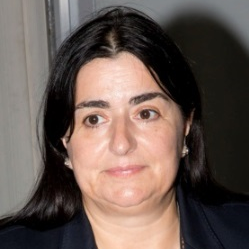Women in Science: Materials Science and Engineering
A special issue of Materials (ISSN 1996-1944).
Deadline for manuscript submissions: closed (20 July 2022) | Viewed by 12347
Special Issue Editors
Interests: bioceramic; thin films; TEM; ceramic composite
Special Issues, Collections and Topics in MDPI journals
Interests: ceramic composites; 2D nanomaterials; SPS; mechanical and electrical properties
Interests: neutron activation analysis; food quality; nanotoxicology; soil and water bioremediation
Special Issues, Collections and Topics in MDPI journals
Special Issue Information
Dear Colleagues,
Researchers are professionals engaged in the conception or creation of new knowledge. Overall, women account for a minority of the world’s researchers. The aim of this Special Issue is to present the excellent women researchers in the field of materials science and engineering.
Materials Science and Engineering combines engineering, physics, and chemistry principles to solve real-world problems associated with nanotechnology, biotechnology, ceramics, energy, manufacturing, and other major engineering disciplines.
This Special Issue is open for submissions (from original research to review articles) across all sections of the journal.
Contributing papers with themes that include, but are not limited to, the following areas are welcome:
- Material design, processing, and characterizations
- Soft materials and biomaterials
- Ceramics
- Metallic and non-metallic thin films
- Materials for energy storage
- Nanomaterials and nanotechnology
Please note: To be considered for this Special Issue, one or all of the corresponding authors must be female researchers.
Dr. Katalin Balazsi
Dr. Rosalía Poyato
Dr. Inga Zinicovscaia
Dr. Anna D. Zervaki
Guest Editors
Manuscript Submission Information
Manuscripts should be submitted online at www.mdpi.com by registering and logging in to this website. Once you are registered, click here to go to the submission form. Manuscripts can be submitted until the deadline. All submissions that pass pre-check are peer-reviewed. Accepted papers will be published continuously in the journal (as soon as accepted) and will be listed together on the special issue website. Research articles, review articles as well as short communications are invited. For planned papers, a title and short abstract (about 100 words) can be sent to the Editorial Office for announcement on this website.
Submitted manuscripts should not have been published previously, nor be under consideration for publication elsewhere (except conference proceedings papers). All manuscripts are thoroughly refereed through a single-blind peer-review process. A guide for authors and other relevant information for submission of manuscripts is available on the Instructions for Authors page. Materials is an international peer-reviewed open access semimonthly journal published by MDPI.
Please visit the Instructions for Authors page before submitting a manuscript. The Article Processing Charge (APC) for publication in this open access journal is 2600 CHF (Swiss Francs). Submitted papers should be well formatted and use good English. Authors may use MDPI's English editing service prior to publication or during author revisions.
Keywords
- materials science and engineering
- female researchers









